Obituary: Johan van Hulst, the teacher who saved Jewish children
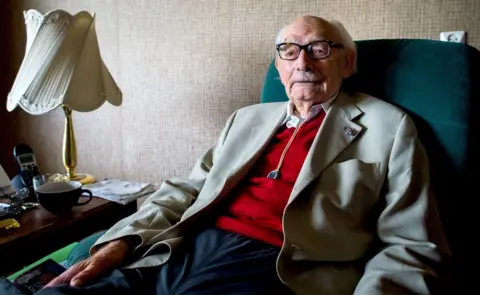 Mats van Soolingen
Mats van SoolingenSome of the children Johan van Hulst helped rescue were so young that they no longer remember the daring acts that saved their lives.
Van Hulst, who died on 22 March aged 107, was a key part of the network that helped at least 600 Dutch babies and children escape the Nazis.
Those children survived thanks to carefully orchestrated operations that smuggled them away right in front of the Nazis seeking to send them to concentration camps.

In 1942, two years after the German invasion of the Netherlands, Johan van Hulst - the son of a furniture upholsterer - was working as a lecturer at a Calvinist teacher training college in Amsterdam.
The school was in the predominantly Jewish neighbourhood of Plantage just east of the city centre.
In the summer of 1942, the school faced closure when the government withdrew funding. Van Hulst, unlike the school's management, insisted it could remain open without government subsidies, and knocked on the doors of students' parents to help fund it.
It stayed open, and the remaining teachers and Van Hulst - now the principal, with two young children - kept it going by working twice their previous hours on a minimum wage.
Across the road from Van Hulst's school was the Hollandsche Schouwburg, a former theatre seized by the Nazis in 1941 to be used as a deportation centre.
While the records of those detained there are no longer available, historians believe about 46,000 people were deported from the old theatre over about 18 months up to the end of 1943.
Most ended up at concentration camps in Westerbork in the Netherlands, or Auschwitz and Sobibor in occupied Poland.
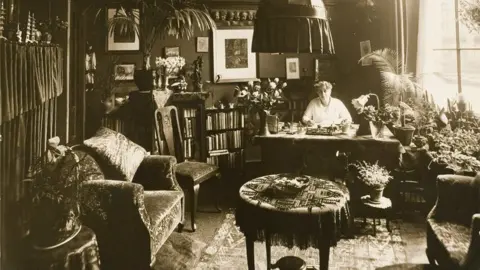 Jewish Historical Museum
Jewish Historical MuseumThe deportation centre's administrator was a German-Jewish man named Walter Süskind, entrusted to run the centre by Nazis who disregarded his Jewish heritage because of his SS links.
Soon after starting his work there however, he noticed that it was easy to help people escape. He falsified arrival numbers, claiming for example that 60 people instead of 75 had arrived on a particular day, and then letting 15 people escape.
His task became easier when, in early 1943, the Nazis took over a crèche across the road from the theatre - and next door to Van Hulst's school - to place Jewish children before deporting them to concentration camps.
Süskind joined forces with the head of the crèche, Henriëtte Pimentel, sneaking children to safety when a tram passed in front of the crèche.
It was only when Pimentel persuaded Van Hulst to join them that their rescue efforts picked up speed.
Their buildings were separated at the back by a hedge. The crèche's nurses would pass children over the hedge to Van Hulst, who would in turn pass them on to Resistance groups who would help hide them.
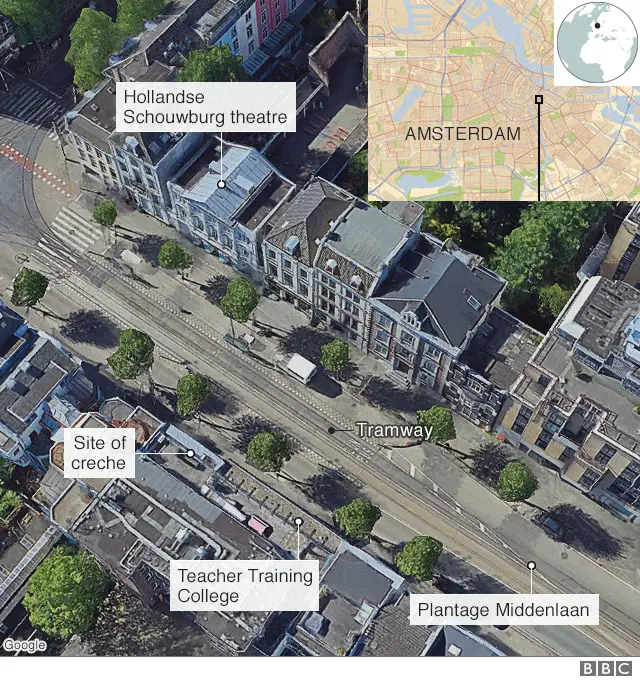
None of the escapees - whose departures were all agreed by their parents - had been registered as new arrivals, so their disappearances were not spotted.
Only a handful were spirited away at a time - enough not to arouse suspicion. But helping some, while knowing others could not be spared, proved painful to the rescuers.
"Everyone understood that if 30 children were brought, we could not save 30 children," Van Hulst told Dutch broadcaster NOS last year. "We had to make a choice, and one of the most horrible things was to make a choice."
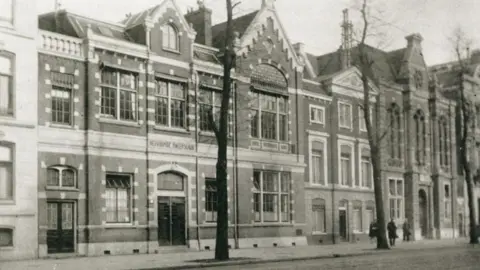 Jewish Historical Museum
Jewish Historical Museum One of the children Van Hulst helped rescue was Lies Caransa, who was smuggled out of the crèche aged four while hiding in a bag. Most of her family was later killed at Sobibor, but she was later reunited with her mother.
"I was not allowed to say goodbye or cuddle my mother and grandmother, because that might make a scene," Lies told NOS.
"I was just allowed to wave. I felt alone and lonely."

In order for the Plantage neighbourhood to hide their rescue efforts, they needed to keep on uncomfortably good terms with the Nazis.
Süskind and other staff at the crèche and old theatre still had to continue with their day jobs. And Van Hulst had one trick to convince the Nazis he was on their side.
"Johan had an anecdote," Annemiek Gringold, a curator in Amsterdam's Jewish Cultural Quarter, told the BBC. "His students would be watching the SS guards and he would shout at the students 'Let these people do their job, it's none of your business', while winking at the SS guards, trying to gain their trust.
"He performed an act quite regularly in order to get their confidence."
All of this took place without him once telling his wife Anna what he was doing, as he did not want her to possess compromising information.
 Jewish Historical Museum
Jewish Historical Museum The rescuers needed a degree of luck too.
When the government sent an inspector to Van Hulst's school without warning, she heard babies crying inside. By chance, the inspector happened to be a member of the Resistance and joined Van Hulst's efforts to move the children to safety.

Read about other notable lives

The end of the operation, when it came, was sudden.
Henriëtte Pimentel was arrested in July 1943, and was killed in Auschwitz in September that year.
That same month, it was announced suddenly that the crèche was to be cleared out. Many children remained inside, and not all could be rescued.
"Try to imagine 80, 90, perhaps 70 or 100 children standing there, and you have to decide which children to take with you," Van Hulst once said. "That was the most difficult day of my life."
The fact he was not able to save more children haunted him to the end, said Annemiek Gringold.
"I only think about what I have not been able to do, about those few thousand children that I could not save," Van Hulst told Het Parool newspaper in 2015.
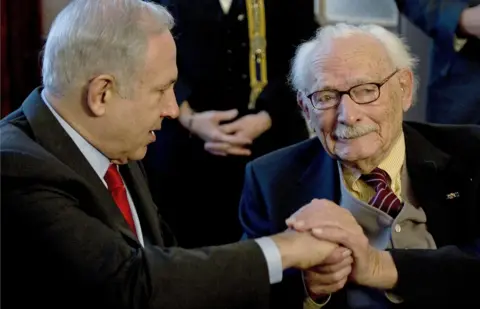 Reuters
ReutersVan Hulst managed to keep his school open throughout the war, defying Nazi attempts to conscript his students, and continued his work in the Resistance.
He spent the last few weeks of the war in hiding, having been alerted that Nazis were coming to arrest him only minutes before they arrived.
In his later life, he spent 25 years as a Dutch senator and was a Member of the European Parliament from 1961 to 1968.
He remained active in politics and education, writing hundreds of publications by hand and winning a chess tournament at the age of 99. His old school now houses the National Holocaust Museum.
While Van Hulst rarely spoke of what he did in World War Two, plenty of others highlighted how important his contribution was.
In 1972, he was awarded the Righteous Among the Nations, a title given by the state of Israel to non-Jews who helped Jews in the war.
"We say: those who save one life saves a universe," Israeli Prime Minister Benjamin Netanyahu told Van Hulst in 2015. "You saved hundreds of universes."
